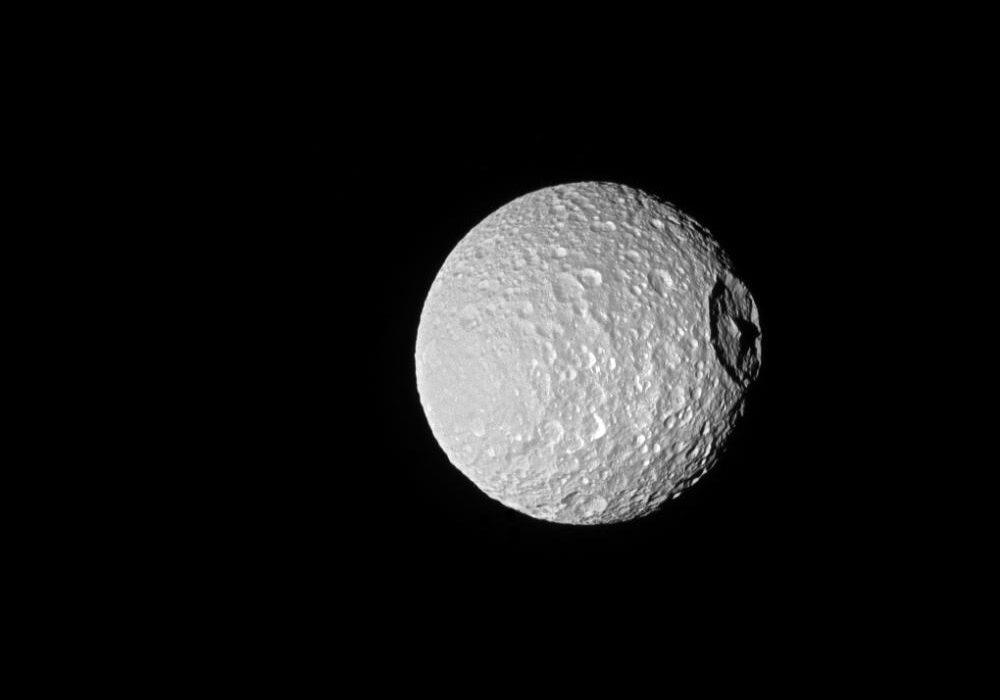Astronomers made a surprising revelation about Mimas, one of Saturn’s moons, famously known as the “Death Star.” This diminutive moon, seemingly an unlikely candidate for harboring life, has been found to potentially host a vast, hidden liquid ocean beneath its icy exterior, redefining our understanding of celestial bodies with habitable conditions.
Mimas, with its distinctive large crater that earned it the nickname “Death Star” due to its resemblance to the iconic space station in Star Wars, defied initial expectations as an ocean world. The research team behind this groundbreaking discovery estimates that the hidden ocean resides 12 to 18 miles (20 to 30 kilometers) beneath Mimas’ icy surface. Astonishingly, this subsurface ocean, believed to be relatively young and emerging between 2 million and 25 million years ago, constitutes at least half of Mimas’ volume.

Valery Lainey, a scientist at the Observatoire de Paris and a member of the discovery team, expressed the significance of the findings: “The major finding here is the discovery of habitability conditions on a solar system object which we would never, never expect to have liquid water. It’s really astonishing.”
The comparison with Mimas’ Saturnian sibling, Enceladus, adds another layer of intrigue. Both moons, situated at similar distances from Saturn and sharing comparable sizes, challenge conventional expectations. Enceladus, known for its subsurface ocean, exhibits geologic activity with plumes and jets, whereas Mimas, although believed to harbor an ocean, has yet to manifest such surface features.
“It’s really surprising we haven’t seen anything, but the thickness of the icy shell of Mimas is enough to maintain this ocean without any significant activity betraying it for millions of years,” Lainey said. “That’s why Cassini did not find anything at the surface of Mimas.”
However, the critical insight into Mimas’ hidden ocean still emerged from Cassini spacecraft data, which allowed scientists to investigate a break in Saturn’s rings called the “Cassini division.” The observation of a peculiar shift in Mimas’ rotation and orbit hinted at the moon either possessing a misshapen, solid rocky core, or a concealed subsurface ocean. The final breakthrough came when researchers modeled Mimas’ motion, revealing that a rocky core could only explain the observations if it were flat and elongated like a pancake, leading to the confirmation of the global subsurface ocean hypothesis.

This finding opens up avenues for investigating the interaction between water and rock on Mimas, potentially leading to “interesting chemistry.” Understanding these interactions is crucial, as similar processes played a vital role in Earth’s history, shaping the conditions for life.
While Mimas may not outwardly appear habitable, Lainey emphasizes the broader implications: “So maybe the conclusion is that if this object can be habitable, who knows what other kinds of object may be habitable?” As future missions unfold, further exploration of Mimas and Enceladus may reveal additional insights into these intriguing ocean worlds, offering clues about the potential for life beyond Earth.





